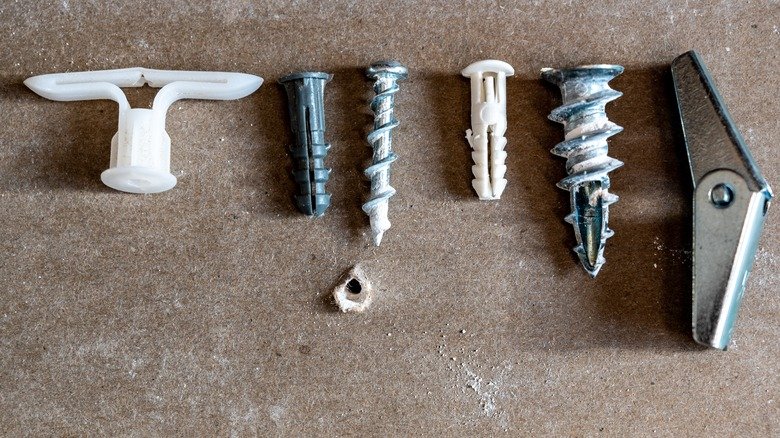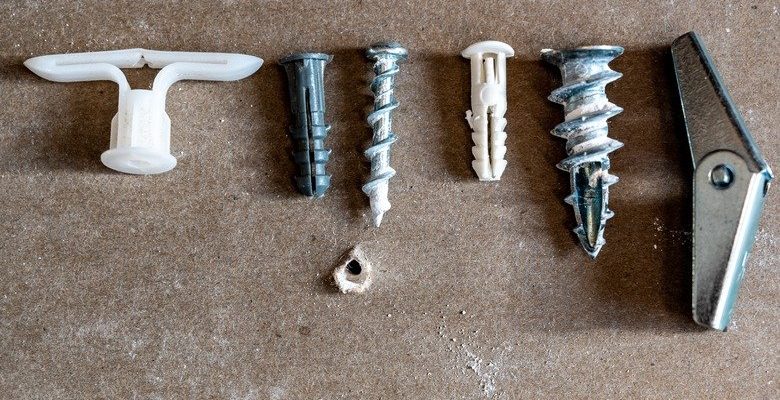
Let me explain: the faceplate on your handleset (whether it’s from Schlage, Kwikset, or another brand) is the metal plate that sits flush against your door. The screw receiver is a tiny threaded hole in this faceplate where the mounting screw goes. When those threads wear out or get damaged (stripped), there’s nothing for the screw to grab, so your handle can’t stay tight. The good news? Repairing a stripped screw receiver on a handleset’s faceplate is something you can do yourself, even if you’ve never tried DIY door repairs before.
Why Do Screw Receivers Strip on Handleset Faceplates?
You might be wondering how a simple screw receiver gets stripped in the first place. Honestly, it’s more common than you’d think. Over time, the constant stress of opening and closing your door slowly wears away the threads inside the receiver. If you ever tried forcing a too-long screw, or overtightened the screws (we’ve all been there), you might have chewed up those delicate metal threads.
Another culprit? Using the wrong size or type of screw for your handleset brand. For example, if your Schlage or Kwikset faceplate came with specific screws and you lost them, grabbing a random one from your toolbox might seem fine—until the threads don’t match up and start grinding away at the receiver. Humidity and rust can also play a role, especially on outside doors. Once those threads are gone, the screw spins uselessly, leaving your handle wobbly or falling off.
Bottom line: stripped screw receivers are the result of wear, overtightening, mismatched screws, or just plain old bad luck. The key is knowing how to fix the stripped receiver without damaging the rest of your handleset.
How to Diagnose a Stripped Screw Receiver
Before you start with any repairs, you want to make sure the screw receiver is actually stripped—and not just experiencing a different problem. Here’s the thing: sometimes, a loose handle is due to a missing screw, a worn-out screw head, or even a misaligned faceplate. So let’s walk through a basic check.
Step 1: Try removing the screws from the faceplate. If they come out easily but seem loose when you try to put them back, that’s a strong sign of stripped threads.
Step 2: Inspect the screws. Are the threads on the screw itself flattened or shaved down? If so, you’ll need new screws—but if the screws look fine, the issue is almost certainly the receiver threads.
Step 3: Gently insert a new screw into the receiver and try to tighten it. If it just spins with zero resistance, bingo: you’re dealing with a stripped screw receiver.
Tip: If you hear a crunching or grinding noise as you tighten, stop immediately. You’ll only make the stripping worse.
Once you know for sure, you’re ready to start the repair process.
Tools and Materials You’ll Need
Repairing a stripped screw receiver on a handleset’s faceplate isn’t about brute force. It’s about using the right tools and a little patience. Here’s a simple list to get you started—no fancy workshop required.
- Replacement screws (preferably from your handleset’s brand, like Schlage or Kwikset)
- Epoxy or metal bonding glue (for filling stripped holes)
- Toothpicks or wooden dowels (for the tried-and-true DIY fix)
- Drill and appropriate drill bit (if you need to widen or clean up the receiver)
- Thread repair kit (Heli-Coil or similar) (for heavy-duty fixes)
- Screwdriver (Phillips or flathead)
- Small file or sandpaper (to smooth out rough edges)
If you’re only dealing with minor stripping, you might get away with a wood filler or even a handful of toothpicks. For more severe cases, it’s worth investing in a thread repair kit designed to restore metal threads in handleset receivers.
Quick Fixes for Lightly Stripped Screw Receivers
Let’s start with the simplest solutions—the ones that work when your screw receiver is just a bit stripped, not totally destroyed.
Toothpick or Matchstick Method: This is the oldest trick in the book, but it works like a charm. Grab a couple of wooden toothpicks or matchsticks, dab them in wood glue, and stuff them into the stripped receiver hole. Then, break off the excess flush with the faceplate. Carefully drive the screw back in. The wood fills the extra space, giving the screw threads something to grab. Don’t laugh—it’s surprisingly sturdy, especially for interior doors.
Epoxy Filler Job: For metal faceplates (like most Schlage or Kwikset sets), mix up a dab of metal epoxy. Fill the stripped receiver hole with the epoxy, then insert the screw while it’s still soft. Give it a gentle twist so the epoxy forms around the threads. Let everything cure according to the epoxy instructions—usually a few hours. When done right, this “re-casts” the screw threads inside the receiver.
Superglue and Baking Soda: If you’re in a jam and need a temporary fix, a little *superglue* mixed with *baking soda* inside the stripped hole can thicken things up enough for the screw to catch. Just remember, this isn’t a forever fix.
These fixes work best for receivers that aren’t completely shredded. If the metal is falling apart or the receiver itself is cracked, you’ll need a sturdier solution.
Heli-Coil and Thread Repair Inserts: The Heavy-Duty Solution
Sometimes, a stripped screw receiver on a handleset’s faceplate is past the point of quick fixes. Here’s where a thread repair kit—like a Heli-Coil—comes in. If you’ve never used one, don’t worry. Think of it as giving your handleset a brand-new threaded insert, stronger than the original.
Step 1: Get a thread repair kit that matches your screw’s size (usually
Step 2: Use the kit’s drill bit to carefully widen the stripped receiver hole in the faceplate. Go slow—you don’t want to damage the rest of the plate.
Step 3: Thread the hole using the provided tap, creating brand-new threads for the insert.
Step 4: Screw in the Heli-Coil or insert. It’s a coiled piece of steel that acts like a miniature new receiver inside the old one.
Step 5: Reinstall the screw. With the fresh steel threads in place, the screw should grip tighter than you ever remember.
Insight: Honestly, this is how professionals fix stripped screw receivers in automotive and mechanical work, and it works wonders on handleset faceplates, too.
It’s a bit more involved, but if you want a permanent, rock-solid fix, this is the way to go.
What If the Entire Faceplate is Damaged?
You might be facing something worse than just a stripped screw receiver—maybe the faceplate itself is bent, rusted, or cracked around the receiver. In this case, repairs get trickier, but all is not lost.
Replace the Faceplate: Most major handleset brands (like Kwikset, Schlage, and Baldwin) offer replacement faceplates. Check your handleset’s model number and order an exact match. Swapping out the faceplate is usually straightforward, but you’ll need to remove the handle and possibly the latch mechanism to get everything off cleanly.
Universal Faceplates: If your brand’s specific part isn’t available, you can try a *universal* door hardware faceplate. Just make sure the screw hole spacing matches your existing setup, or else you’ll face more trouble than it’s worth.
Repair or Upgrade: Sometimes, stripping is just a sign that the handleset has run its course. If you’ve been dealing with sync, code, or reset issues on a smart lock handleset, this might be a good time to upgrade instead of repair.
Personal Note: I once spent hours fixing a battered old faceplate, only to realize a replacement cost less than my coffee habit for a week. Sometimes, “cut your losses” is good advice!
Tips for Preventing Stripped Screw Receivers in the Future
After repairing a stripped screw receiver, you don’t want a repeat. Here are a few simple habits to help your handleset last longer:
- Use the Right Screws: Always match the screw size and type to your faceplate’s brand—mixing screws is a recipe for stripped threads.
- Don’t Overtighten: Stop turning the screwdriver as soon as you feel firm resistance. More torque isn’t always better.
- Check Alignment: Make sure the screw is going in straight. If it starts crooked, back it out and start again.
- Lubricate Threads: A tiny bit of machine oil or graphite can make all the difference, especially in humid environments.
- Inspect Regularly: If your handle starts feeling loose, fix it immediately—waiting usually makes the problem worse.
It might sound like overkill, but a little attention now saves you from big headaches later.
When to Call a Professional Locksmith
Here’s the thing: not every DIY fix goes smoothly. If you try repairing a stripped screw receiver on your handleset’s faceplate and end up with a faceplate that’s bent, a lock that won’t sync, or a screw that still won’t catch, it’s okay to call in the pros.
Locksmiths see this problem all the time. They have specialized tools and replacement parts for almost every brand—Schlage, Kwikset, Yale, you name it. If your handleset is connected to a smart lock system (with codes, battery packs, or remote syncing), you’ll especially want a pro to avoid more complex troubleshooting down the line.
Honestly, peace of mind is worth the call if you’re feeling out of your depth or worried about making things worse.
Wrapping Up: Getting Your Handleset Secure Again
Dealing with a stripped screw receiver on a handleset’s faceplate can feel like a hassle you didn’t sign up for. But whether you go with a simple toothpick hack, a professional Heli-Coil repair, or a brand-new faceplate, it’s totally fixable—usually in less time than it takes to watch a TV episode.
The trick is matching your repair method to how badly the threads are stripped and what materials you’re working with. Take it step by step, don’t rush, and don’t be afraid to ask for help if you need it. Once you’re done, you’ll be back to smoothly opening and closing your door—no more wobbles, no more worries, and definitely no more falling handles.
